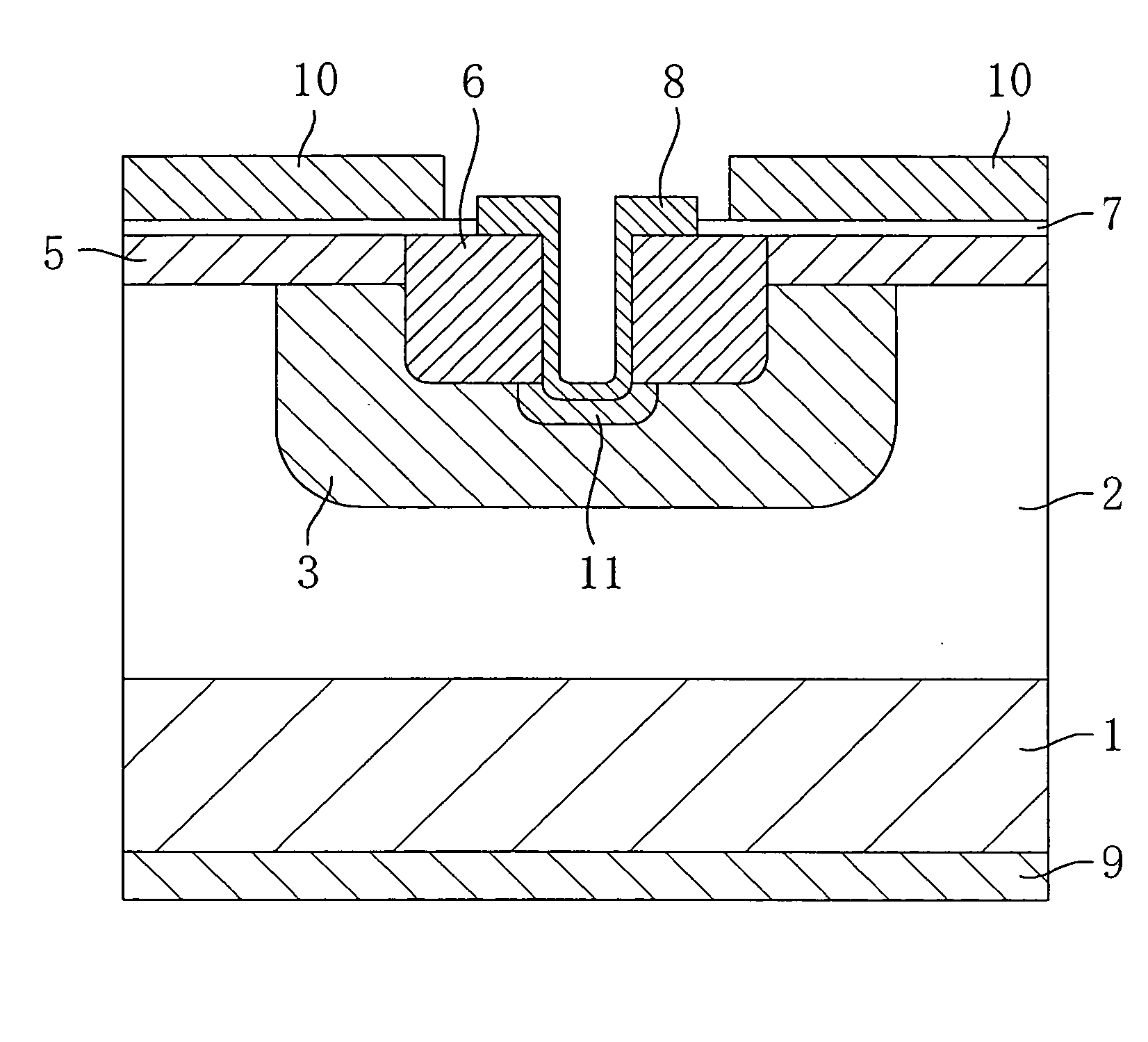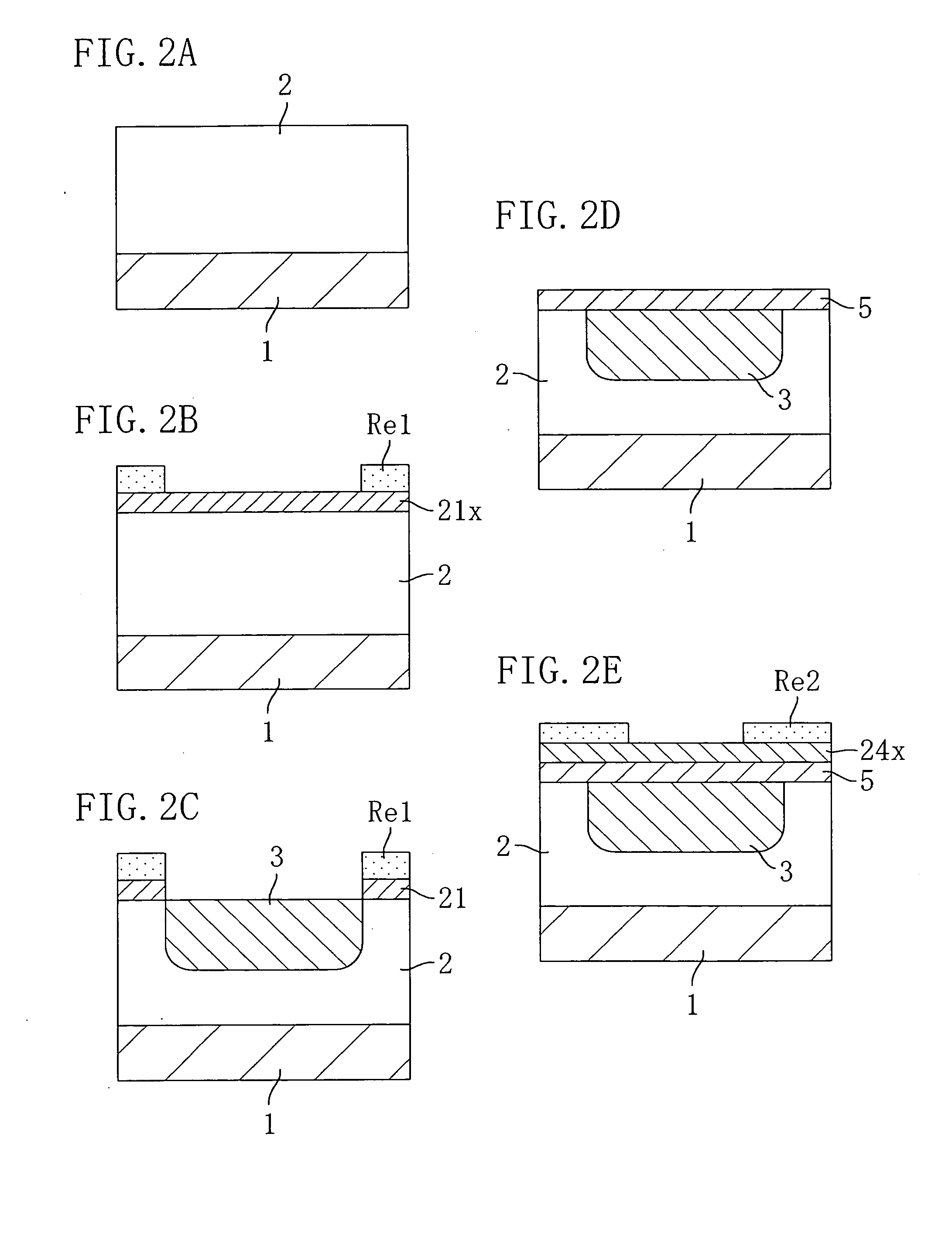Silicon carbide-oxide layered structure, production method thereof, and semiconductor device
a technology of silicon carbideoxide and layered structure, which is applied in the direction of semiconductor devices, basic electric elements, electrical apparatus, etc., can solve the problems of affecting the application of the above techniques to commercial devices, affecting the actual channel mobility of 20 cm, and affecting the use of commercial devices. , to achieve the effect of high carrier mobility and high electric current drivability
- Summary
- Abstract
- Description
- Claims
- Application Information
AI Technical Summary
Benefits of technology
Problems solved by technology
Method used
Image
Examples
embodiment 1
[0042] (Embodiment 1)
[0043]FIG. 1 is a cross-sectional view showing a structure of an accumulative MISFET which uses a SiC substrate according to embodiment 1 of the present invention. Although only a partial cross section of the structure is shown in FIG. 1, a plan view of the MISFET is as shown in FIG. 2 or FIG. 10 of PCT / JP01 / 07810.
[0044] In embodiment 1, nitrogen is used as a V-group element. However, any other V-group element, such as phosphorus (P), arsenic (As), or the like, may be used.
[0045] In the present invention, a “SiC (silicon carbide) layer” means most preferably a bulk monocrystalline SiC substrate or a SiC layer epitaxially grown on a bulk monocrystalline SiC substrate. SiC has many polytypes, among which 3C, 4H, 6H and 15R polytypes are especially useful for electronic devices. When these polytypes are used, the present invention brings adequate results. In the description provided below, the SiC layer is a 4H—SiC (0 0 0 1) layer epitaxially grown on a bulk SiC ...
embodiment 2
[0090] (Embodiment 2)
[0091] In embodiment 2, the structure of a silicon carbide-oxide layered structure is basically the same as that of embodiment 1, and therefore, the description thereof is herein omitted. Only the production process of embodiment 2 is described in this section.
[0092] In embodiment 2, a first oxide layer is formed over the surface of the SiC layer before the step of FIG. 4B. The thickness of the first oxide layer is preferably smaller than 20 nm, e.g., about 8 nm. Thereafter, the structure is annealed in an inert gas (Ar, N2, He, Ne, or the like) atmosphere at 1000° C. or higher (e.g., 1000° C. to 1150° C.). The first oxide layer is densified in advance by this annealing treatment.
[0093] Then, the structure is annealed for 1 hour with a gas containing nitrogen, such as NO gas, N2O gas, or the like, or a gas containing phosphorus (P), for example, at 1150° C. with a chamber internal pressure of 150 Torr (about 2.00×104 Pa).
[0094] Then, a second oxide layer havi...
PUM
 Login to View More
Login to View More Abstract
Description
Claims
Application Information
 Login to View More
Login to View More - R&D
- Intellectual Property
- Life Sciences
- Materials
- Tech Scout
- Unparalleled Data Quality
- Higher Quality Content
- 60% Fewer Hallucinations
Browse by: Latest US Patents, China's latest patents, Technical Efficacy Thesaurus, Application Domain, Technology Topic, Popular Technical Reports.
© 2025 PatSnap. All rights reserved.Legal|Privacy policy|Modern Slavery Act Transparency Statement|Sitemap|About US| Contact US: help@patsnap.com



